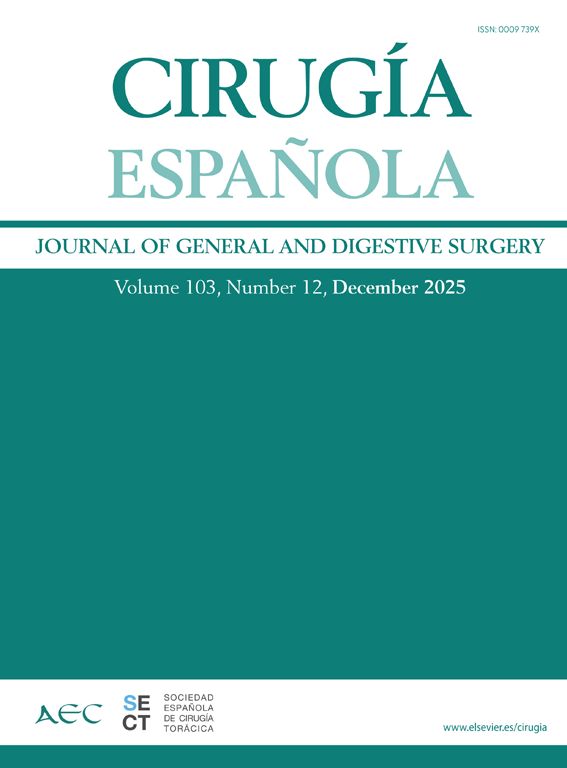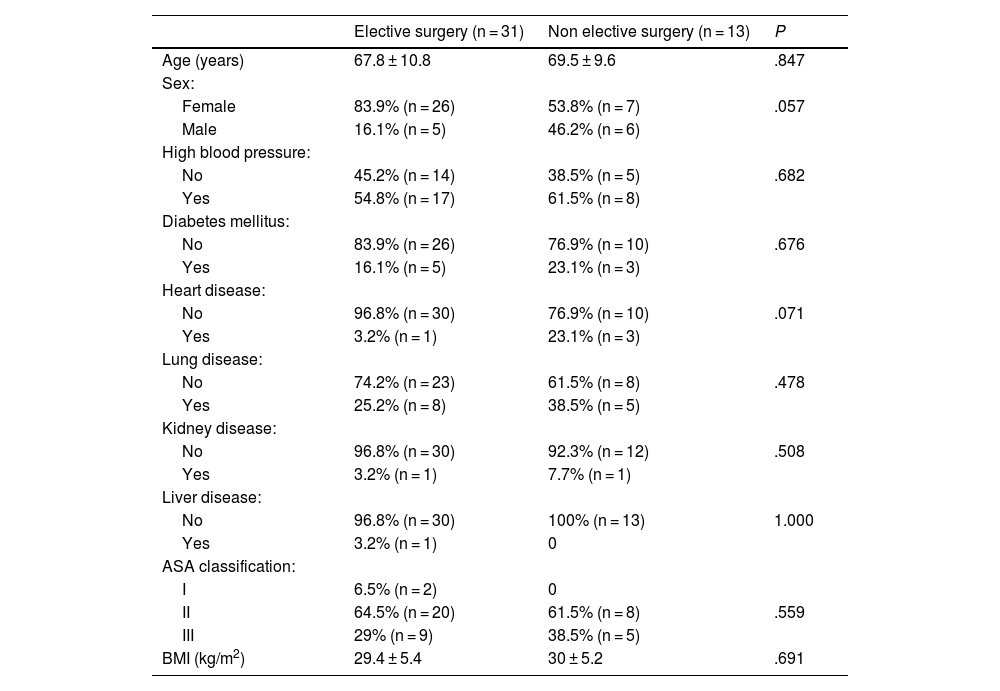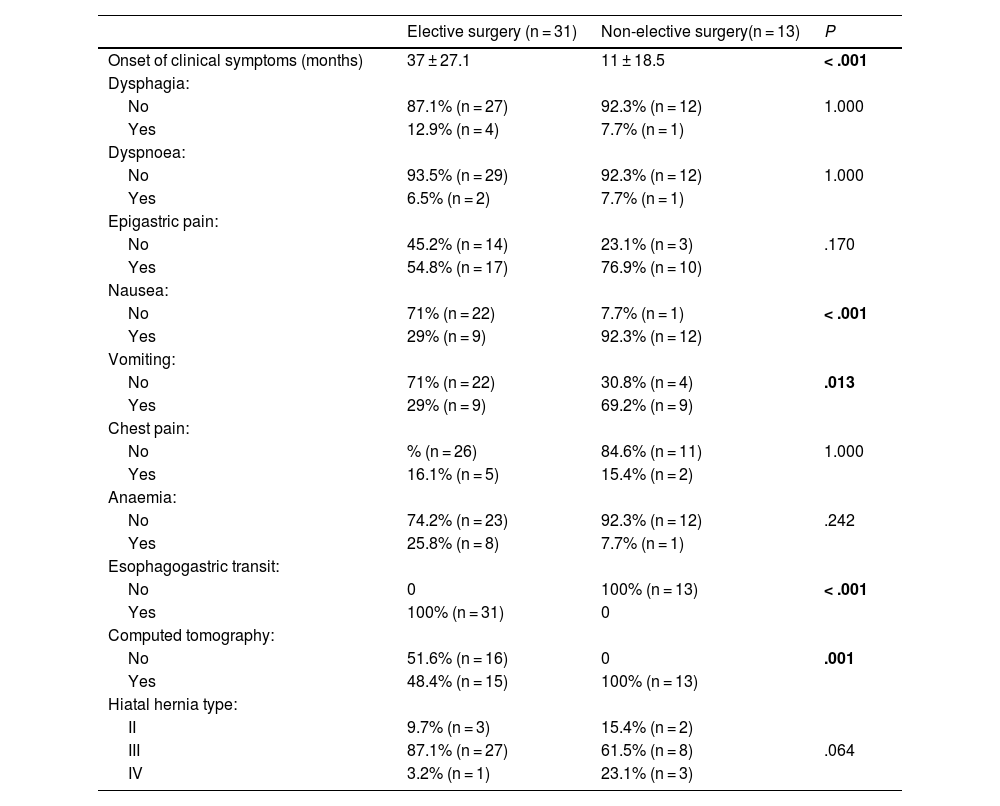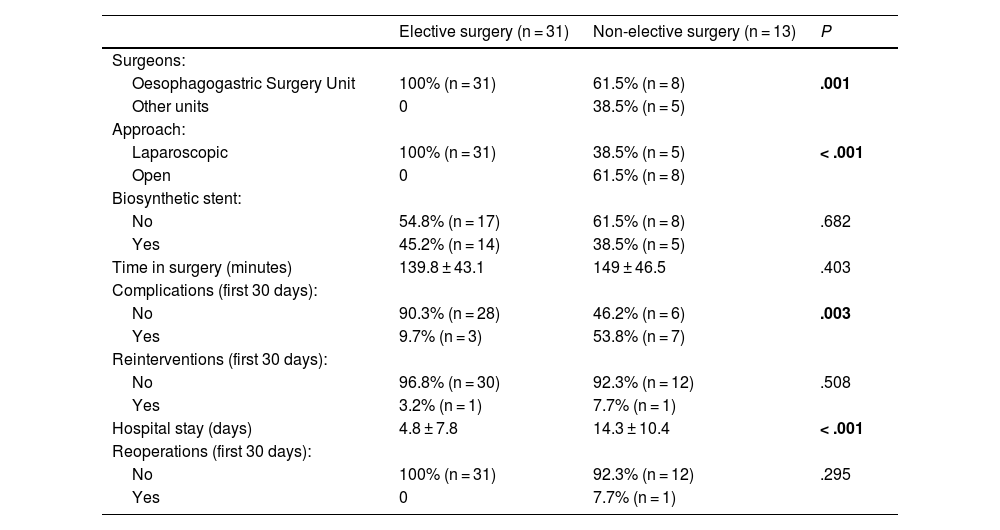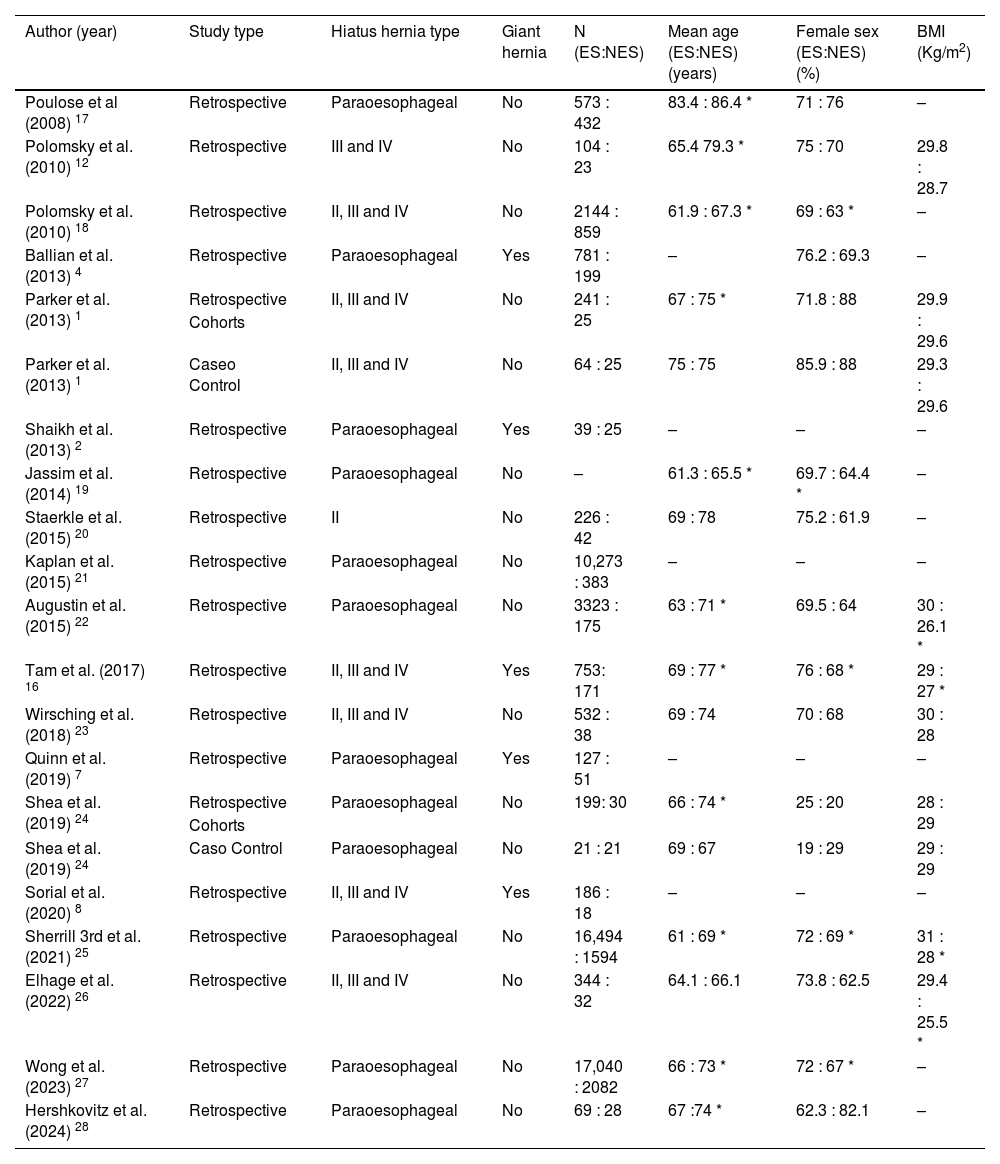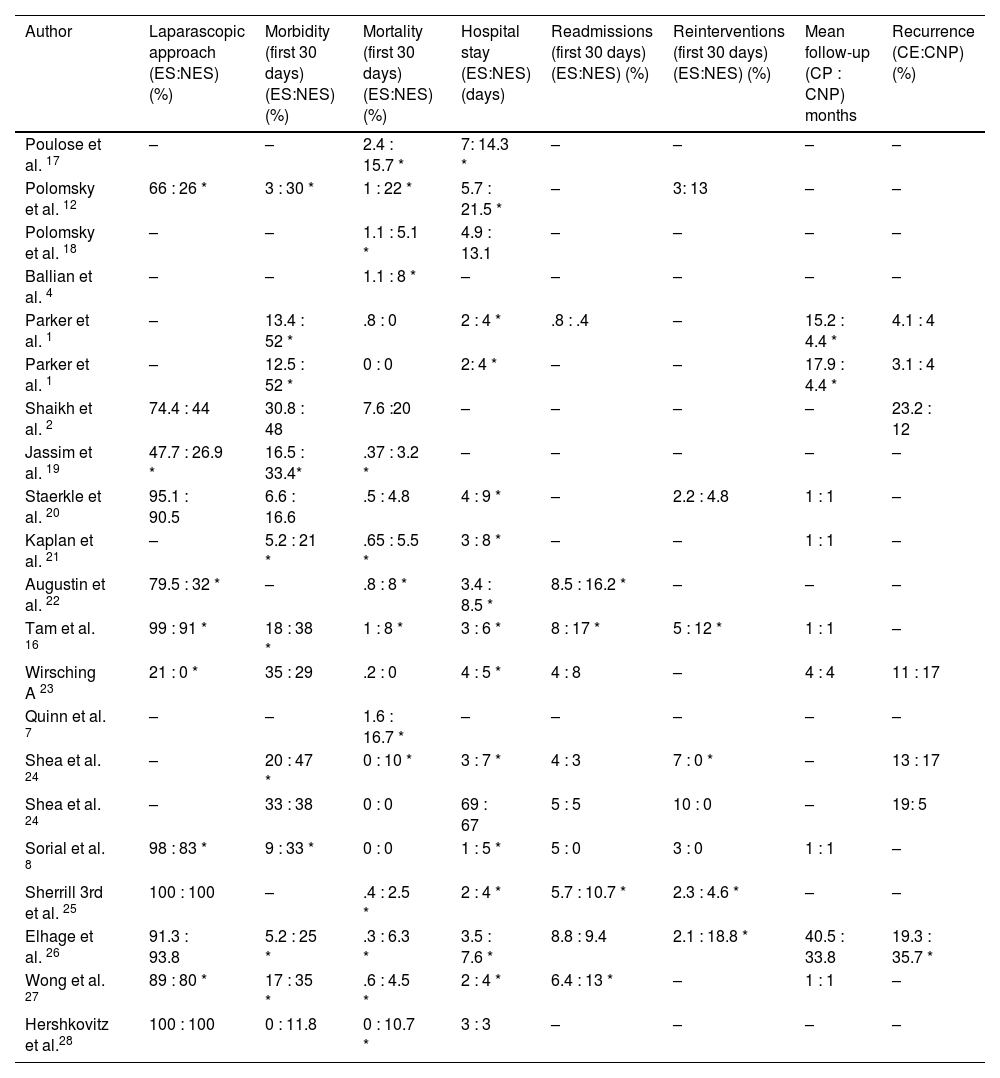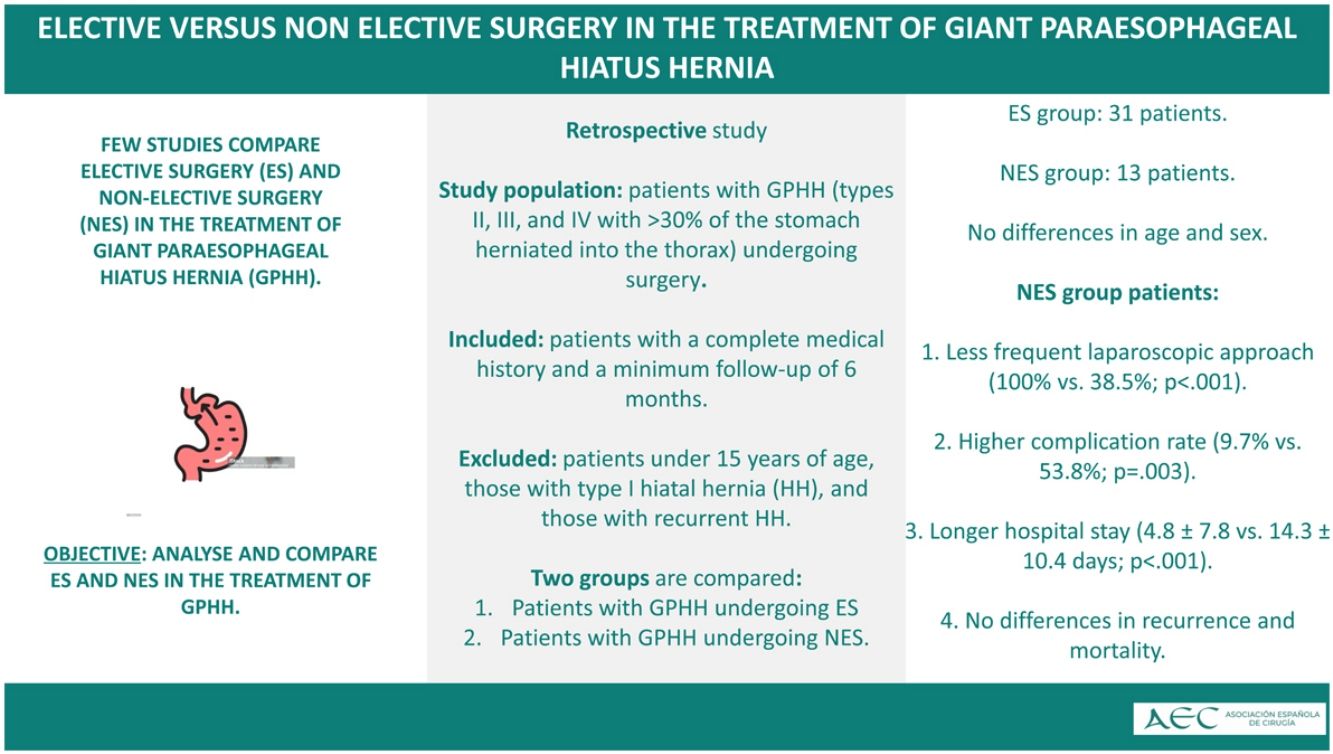There are few studies comparing elective surgery (ES) and non-elective surgery (NES) in the treatment of giant paraoesophageal hiatal hernia (GPHH). The aim of this study is to analyze and compare the results in terms of morbidity, mortality and recurrences of ES and NES in the treatment of GPHH.
MethodsRetrospective study whose study population consisted of patients with GPHH (types II, III and IV with >30% of the herniated stomach in the thorax) who underwent surgery. Patients with a complete clinical history and a minimum follow-up of 6 months were included. Patients under 15 years old, those with hiatal hernia (HH) type I and those with recurrent HH were excluded. Two groups were compared: patients with GPHH in whom ES was performed and patients with GPHH in whom NES was performed.
ResultsThe ES group was composed of 31 patients and the NES group of 13 patients. There were no differences in terms of age and sex. Patients in the NES group had a lower percentage of laparoscopic approach (100% vs. 38.5%; P < .001), a higher percentage of complications (9.7% vs. 53.8%; P = .003) and a longer hospital stay (4.8 ± 7.8 vs. 14.3 ± 10.4 days; P < .001). There were no differences between the two groups in terms of recurrence and mortality.
ConclusionsRepair of GPHH by NES presents greater morbidity and hospital stay compared to repair by ES, however, there are no differences in terms of recurrences and mortality.
Existen escasos estudios que comparan la cirugía programada (CP) y la cirugía no programada (CNP) en el tratamiento de la hernia de hiato paraesofágica gigante (HHPG). El objetivo de este estudio es analizar y comparar los resultados en términos de morbilidad, mortalidad y recurrencias de la CP y CNP en el tratamiento de la HHPG.
MétodosEstudio retrospectivo cuya población a estudio la componen los pacientes con HHPG (tipos II, III y IV con >30% del estómago herniado en tórax) intervenidos. Se incluyen los pacientes con una historia clínica completa y un seguimiento mínimo de 6 meses. Se excluyen los pacientes menores de 15 años, aquellos con hernia de hiato (HH) tipo I y aquellos con HH recidivadas. Se comparan 2 grupos: pacientes con HHPG en los que se realiza CP y pacientes con HHPG en los que se realiza CNP.
ResultadosEl grupo de CP estuvo compuesto por 31 pacientes y el grupo de CNP por 13 pacientes. No existieron diferencias en cuanto a edad y sexo. Los pacientes del grupo CNP presentaron un menor porcentaje de abordaje laparoscópico (100% vs. 38,5%; P < ,001), mayor porcentaje de complicaciones (9,7% vs. 53,8%; P = ,003) y mayor estancia hospitalaria (4,8 ± 7,8 vs. 14,3 ± 10,4 días; P < ,001). No existieron diferencias entre ambos grupos en cuanto a recidivas y mortalidad.
ConclusionesLa reparación de la HHPG mediante CNP presenta mayor morbilidad y estancia hospitalaria respecto a la reparación mediante CP, sin embargo, no existen diferencias en cuanto a recurrencias y mortalidad.



